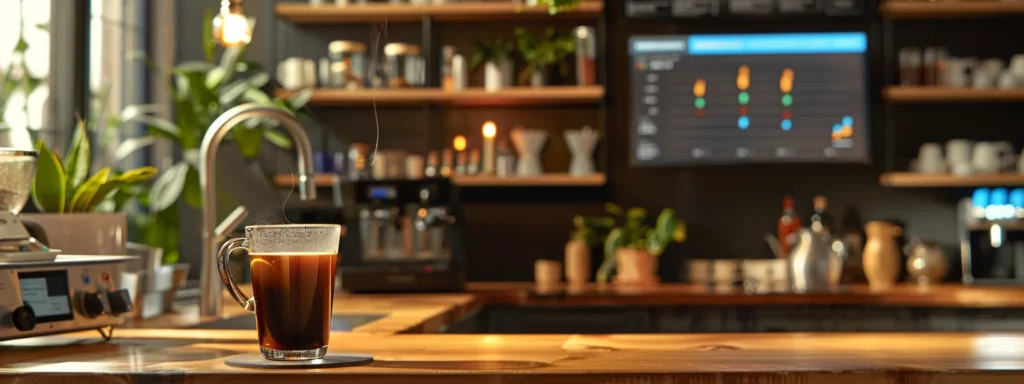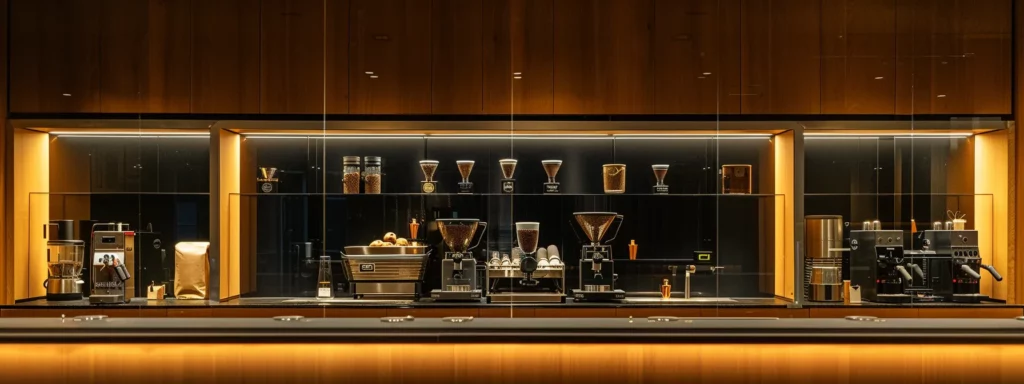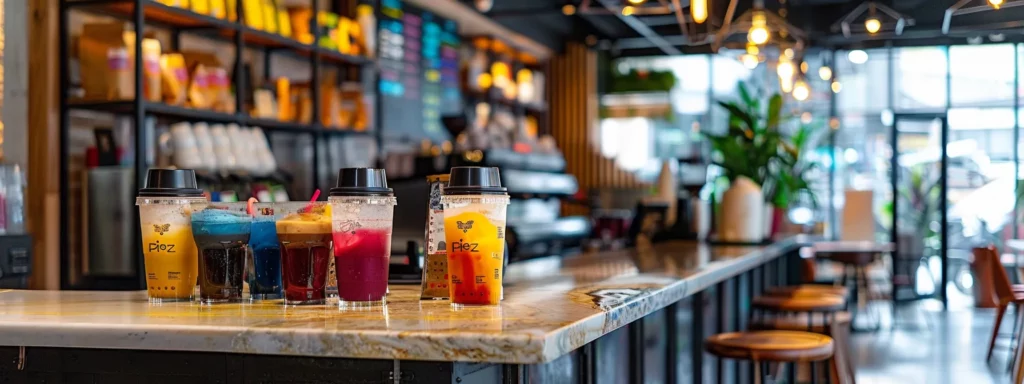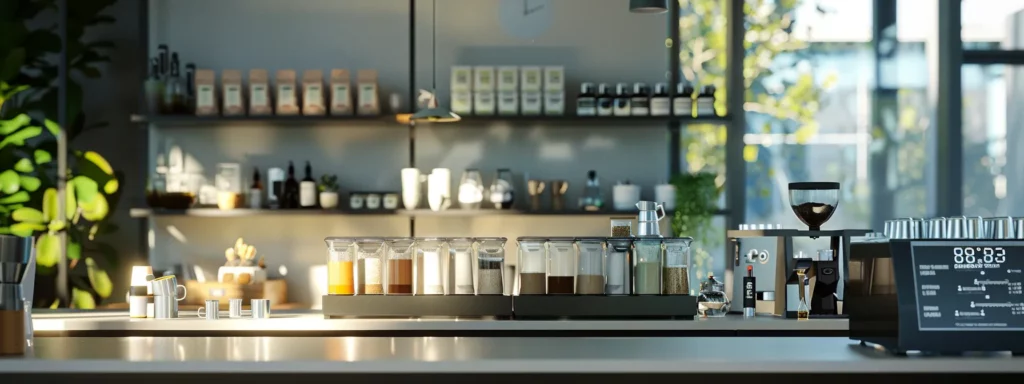Benefits of Caffeine in Coffee for Your Health

How Much Caffeine in a Cup of Coffee? A Detailed Guide
How much caffeine in a cup of coffee? Many coffee lovers wonder about the exact numbers. This guide tackles average caffeine levels, brewing methods, and even what decaf means numerically. It helps readers understand why their daily cup might differ from standard numbers and offers tips to better manage caffeine intake. Readers looking for clear, useful info on coffee and caffeine will find practical answers here.
Key Takeaways
- the guide examines eight-ounce coffee servings for clear caffeine measurement
- brewing methods directly affect the caffeine extraction process
- different beans and roasts produce varying caffeine levels
- decaf techniques remove most caffeine while keeping key flavors intact
- safe daily caffeine limits are highlighted for balanced energy management
Understanding Average Caffeine Levels in Coffee

The guide covers a standard coffee cup size and the typical caffeine range in an eight-ounce cup. It touches on why caffeine in your favorite latte varies—affecting heart rate and alertness. A systematic review of coffee preparation methods is provided, along with a look at how coffee compares to tea and soda.
Defining a Standard Cup of Coffee Size
This guide defines a standard cup of coffee size with a focus on its consistent eight-ounce measure, ensuring that caffeine content analysis is simple and straight to the point. Practical research in the coffee industry shows variations, unlike how yerba mate and other plant-based brews often offer a different experience for each patient due to unique roasting methods and fat content in dairy blend preparations:
- Examination of eight-ounce servings
- Comparison with alternative beverage sizes
- Insights from research in coffee preparation methods
The coffee connoisseur emphasizes basic yet effective steps in measuring coffee servings, inviting readers to understand the brewing process through clear comparison and analysis. This methodical approach supports everyday decisions when selecting that favorite cup of comfort, making the journey enjoyable and informative for every patient seeking better caffeine routines.
Typical Range of Caffeine Per Eight Ounce Cup
The typical caffeine content in an eight-ounce serving ranges widely, with different coffea beans and extraction methods playing a role in the final result. Brewers adjust pressure during brewing to ensure a balanced flavor and gradual caffeine release that suits everyday consumption.
Industry experts note that the caffeine levels may subtly affect the liver and body, a detail particularly relevant for those managing their intake during pregnancy. Even compared to the strongest coffee options, most routine cups deliver a consistent and moderate amount of buzz that fits well within daily routines.
Why Coffee Caffeine Content Varies So Widely
Coffee caffeine content can change significantly based on various factors in agriculture and processing techniques. Experts note that variations in bean type, roasting methods, and extraction techniques, including decaffeination practices, all contribute to the amounts found in each brew, ensuring that the final product suits different palates and dietary choices.
Differences in caffeine levels also relate to external factors such as brewing style and even interactions with other ingredients like herbal tea or alcohol. Research shows that slight variations in brewing methods can impact the beverage’s overall toxicity profile, allowing coffee enthusiasts to manage their intake according to personal health needs.
Comparing Caffeine in Coffee to Tea and Soda
Industry experts note that coffee generally delivers a robust caffeine boost compared to tea and soda, with many coffee fans choosing their regular drink over half caff k cups for a steadier metabolism boost. The caffeine profile of coffee often leads to a more pronounced alertness effect, a factor that contrasts with the gentler stimulation from beverages like tea or soda mixed with ingredients such as guarana.
Studies indicate that even though coffee tends to offer higher caffeine amounts, moderation remains key for all consumers, especially those who need to care for the fetus during pregnancy. Specialty coffee preparations provide enough caffeine to keep the body energized while allowing individuals to make conscious choices about the levels that work best for their daily routines.
Average caffeine is a simple measure of your brew’s punch. The next section shows the factors that shape the kick in every cup.
Key Factors Influencing Caffeine in Your Coffee

Different coffee bean varieties, roasting methods, and grind sizes shape caffeine content. Water temperature and brew time adjust the final kick, while serving size, like weighing a kilogram of beans, refines the dose. Even factors such as bone strength, smoking habits, or asking “is mushroom coffee good for you” can influence overall mood.
Coffee Bean Varieties and Their Caffeine Differences
The coffee connoisseur notes that different bean varieties offer unique caffeine differences, with coffea canephora often delivering a stronger punch compared to other types. This distinct profile helps those who add a bit of cream to their brew avoid a potential headache associated with consuming too much caffeine, according to guidelines from the american academy of pediatrics.
Experts in obstetrics are also mindful of how various bean types impact caffeine intake, advising moderation for a balanced experience. The coffee community finds that understanding these differences helps them tailor their beverage to meet personal needs while enjoying a reliably satisfying cup.
How Roasting Affects Caffeine Amounts
The roasting process significantly shapes caffeine content in coffee, where lighter roasts tend to retain more of the antioxidant properties, making them a good ally for those watching their healthy diet. This difference helps reduce fatigue and supports overall wellness for individuals concerned about long-term disease prevention, while brewing methods like a french press can further influence the final balance.
Variations in roast levels can lead to noticeable differences in taste and caffeine strength, which affects how the body responds to that midday boost. Industry experts believe that choosing the right roast can provide a smoother experience while keeping fatigue at bay and complementing a healthy diet with beneficial antioxidants.
Grind Size Impact on Caffeine Extraction Rate
Grind size directly influences caffeine extraction, where finer grinds often release more caffeine into the brew. This effect can lead to stronger flavor and may even cause noticeable effects like palpitations for sensitive coffee drinkers, prompting questions such as “is coffee good for you” when compared to alternatives like soft drink or even chocolate-based treats that are popular in weight management plans.
Coarser grinds provide a smoother taste profile and may result in a milder caffeine kick, which can benefit those eager to control their daily intake without compromising enjoyment. Experts note that balancing grind size with brewing time aids in aligning caffeine levels with personal needs, linking choices in coffee preparation to broader health goals such as weight management.
Water Temperature and Brew Time Considerations
A steady water temperature and proper brew time not only bring out a rich taste in coffee but also influence the rate at which compounds like magnesium and dopamine interact during the brewing process. Research from the food and drug administration confirms that precise handling of these factors can help maintain a balanced calorie count and deliver an enjoyable sip.
Experts note that adjusting brew time can subtly change caffeine extraction while improving the overall flavor profile and stimulating dopamine release. This careful consideration of water temperature and timing offers a practical solution for consumers seeking to optimize the taste and potential health benefits in their daily brew.
Serving Size Adjustments for Caffeine Calculation
Adjusting serving size plays a key role in accurately calculating caffeine content in each cup. The coffee connoisseur finds that whether the brew is a strong high caffeine coffee or a mild variation, even minor changes in the cup’s volume affect the overall impact on stress and potential inflammation relief, similar to how dietary fiber supports smooth digestion when paired with medicine.
Experts recommend testing different serving sizes to match personal needs and morning routines. They highlight that even small adjustments can help manage stress levels while ensuring that each cup aligns with broader nutritional goals, offering a balanced blend of flavor and wellness benefits.
Every factor works to mold the character of your coffee. Next, the focus shifts to how various brewing methods set the caffeine level in your cup.
Caffeine Amounts in Popular Coffee Brewing Methods

This section reviews caffeine in standard drip coffee, espresso, French Press, cold brew, and instant coffee. It also touches on topics like asthma, insomnia, dietary guidelines for americans, podcast tips, and side effect awareness. Each brewing method’s caffeine potency is clearly broken down for simple comparison and practical insight.
Caffeine Content in Standard Drip Coffee
Standard drip coffee serves as a dependable source of caffeine, offering a balanced stimulant effect that supports everyday energy levels. Experts stress that pairing this brew with quality drinking water can aid in maintaining overall health and reducing potential risks associated with high caffeine intake.
Research shows that regular drip coffee provides a predictable caffeine content, making it easier to manage one’s daily consumption while still enjoying a robust flavor. Professionals suggest keeping proper hydration habits to balance the inherent stimulant properties and help mitigate any health concerns.
Measuring Caffeine Potency in Espresso
Caffeine in coffee, especially in espresso, offers a noticeable jolt that some compare to a drug for alertness, with even the world’s strongest coffee sometimes serving as a mild therapy for a mid-day slump. Researchers and baristas alike track espresso‘s caffeine potency by analyzing extraction methods and bean variations:
- Brewing time
- Grind size
- Water temperature
Espresso measurements often serve as a benchmark, providing a sharper contrast than tea and other beverages, and offering practical insights that help consumers tailor their daily caffeine intake easily. Coffee experts suggest that understanding these methods can lead to better management of one’s overall caffeine profile, ensuring a pleasant boost without excess intake.
Caffeine Levels Typical for French Press Coffee
French Press coffee often provides a richer experience in caffeine extraction, delivering a steady boost that complements a well-balanced diet, including options like black tea and cold brew coffee. Research indicates that careful brewing can help regulate blood pressure without compromising flavor, and professionals in advertising have noted its appeal to those searching for coffee for weight loss.
This brewing method offers clear advantages in terms of caffeine levels, with measurable differences based on grind size and steeping time:
- Precise extraction processes
- Balanced flavor and caffeine release
- Potential benefits for blood pressure maintenance
- Consideration for coffee for weight loss regimens
- Influence observed in comparative studies with black tea and cold brew coffee
Experts emphasize that adapting brewing techniques can help meet individual energy needs while keeping lifestyle goals in check.
Cold Brew Coffee Caffeine Facts
Cold brew coffee offers a unique dose of caffeine that tends to differ from other brewing methods, often featuring a smoother impact than a half caff coffee option. Experts note that when preparing with coffea arabica, using a measured teaspoon of grounds can help control the extraction for an even dose, much like brewing a mild cup of green tea.
Practitioners in the brewing community often highlight that cold brew coffee provides a robust yet balanced caffeine release, making it a favored choice for those seeking steady energy. They agree that carefully monitoring the extraction process equates to obtaining the right dose without the typical jitters found in other forms, ensuring a reliable alternative for daily routines.
Instant Coffee Caffeine a Quick Reference
Instant coffee offers a reliable caffeine kick that many coffee lovers appreciate when time is short. Industry experts note that its caffeine content can vary, making it a comparable alternative to a cappuccino, while the impact on blood flow and hypertension remains under practical scrutiny like the effects observed with certain medication routines.
Researchers emphasize that the caffeine levels in instant coffee are consistent enough to be useful for daily routines, even as environmental factors such as climate change continue to influence coffee bean quality. This method provides a straightforward option for individuals who monitor caffeine intake closely to manage health goals or adjust their morning beverage habits.
The numbers show brewing methods at work. Now a look at coffee shop drinks promises fresh surprises.
Comparing Caffeine Content Across Coffee Shop Drinks

This section breaks down caffeine amounts in popular chain coffees, specialty cafe brews, milk-based drinks, and iced coffees. It offers practical insights backed by clinical trial data and research on digestion, type 2 diabetes, saturated fat, and breastfeeding. Each area explains how these factors influence your coffee experience, providing a clear look into the caffeine content across various coffee shop drinks.
Estimating Caffeine in Popular Chain Coffees
Popular chain coffees are known for providing a consistent caffeine dose across various sizes, and this predictability helps many customers manage their weight while enjoying a daily boost. The estimation of caffeine levels plays a role in tailoring choices for those with conditions like ulcerative colitis, and even for sports enthusiasts who plan their exercise regimen after their morning pick-me-up.
Many people also consider the impact of added milk on the overall caffeine experience, noting that different species of coffee beans can lead to variations in flavor and strength. Experts find that understanding these differences can help consumers make informed choices at chain stores and enjoy their favorite brew without any surprises.
Caffeine Variations in Specialty Cafe Brews
Specialty cafe brews offer a range of caffeine levels that vary by bean type, roast, and unique recipe additions such as sugar and vitamin infusions, ensuring each mug delivers a balanced flavor alongside targeted nutrition benefits. The careful formulation often brings noticeable changes that improve daily energy, cholesterol balance, and overall wellness:
- Unique bean selections
- Custom roast profiles
- Recipe tweaks with sugar and vitamin enhancements
- Precise caffeine extraction techniques
- Focus on nutrition and cholesterol management
Industry experts note that specialty cafe drinks tailor caffeine levels to meet various consumer needs, often resulting in a smoother experience that minimizes a jolt while maximizing a nutritional boost. This approach ensures coffee choices can support health goals without compromising on flavor or overall satisfaction.
Caffeine Presence in Milk Based Coffee Drinks
The coffee connoisseur notes that milk-based coffee drinks contain a controlled level of caffeine that can help maintain focus and provide steady energy, much like a small shot of espresso. This information is useful for those watching their weight loss goals while keeping glucose levels steady and managing daily attention spans, here are the key points:
- Balanced caffeine extraction from rich espresso blends
- Moderate caffeine content paired with creamy milk
- Helpful information for managing glucose and weight loss
- Enhanced attention without excessive stimulation
Experts in the coffee industry appreciate that these milk-based beverages serve a dual purpose: a flavorful treat that also provides controlled caffeine levels, offering practical benefits for everyday routines with a focus on clear information and balanced health markers.
Assessing Caffeine in Iced Coffee Beverages
Iced coffee beverages offer a refreshing way to enjoy your daily caffeine fix, and experts stress that proper bean selection is key to ensuring a balanced energy drink effect. Consistent brewing practices help deliver a dependable nutrient profile while supporting overall well-being, which some studies link to reduced risks of dementia.
Reviews of coffee shop options reveal differences in how caffeine is extracted from beans, resulting in diverse strength levels and flavor profiles:
- Careful selection of high-quality bean varieties
- Techniques that mimic an energy drink boost
- Addition of fruit or nutrient-rich ingredients for extra health benefits
Each factor plays a role in determining the overall impact of your iced coffee, guiding consumers to choose options that best fit their taste and wellness goals.
The focus now shifts to decaf, a twist on the usual brew. The next section shows the true caffeine count that still surprises even the savviest drinkers.
Decaffeinated Coffee Caffeine Content Reality

Coffee becomes decaffeinated through methods that remove most caffeine without stripping flavor, with heat and chemical processes playing a role from the coffee bean to your cup. Readers learn how residual caffeine is measured, why decaf processes vary, and the hormone effects on caffeine hair growth, plus why some choose decaf over beverages like cola.
How Coffee Becomes Decaffeinated
Coffee is decaffeinated through methods that use water, solvents, or carbon dioxide to extract caffeine while keeping the essential flavors intact. This process requires careful temperature control to avoid damaging compounds that support the brain and overall health, especially for individuals managing conditions like kidney disease.
Decaffeination techniques involve multiple steps to ensure that only the caffeine is removed:
- Steeping the beans in water
- Using a solvent to extract caffeine
- Restoring the beans’ flavor compounds
The method is designed to maintain a balance in flavor that appeals to coffee lovers who want a gentler boost for the brain and care about kidney disease management.
Measuring Residual Caffeine in Decaf Brews
The analysis of residual caffeine in decaf brews relies on precise laboratory tests, offering a clear picture of what remains after the decaffeination process. Experts in coffee brewing note that even decaf choices carry a small amount of caffeine, which can be comfortably integrated into daily routines.
Specialists measure these trace amounts using advanced extraction methods to ensure the process preserves the essential flavors. This practical insight helps individuals tailor their caffeine intake while continuing to enjoy their preferred cup of comfort.
Different Decaf Processes and Resulting Caffeine
Different decaf processes, such as the water method and carbon dioxide technique, result in varying amounts of residual caffeine. The water method gently extracts caffeine while keeping the bean’s natural flavor, whereas the carbon dioxide technique targets caffeine more selectively for a cleaner finish.
Experts note that these processes influence not just taste but also the final caffeine levels in decaf coffee. The remaining caffeine amount serves as a reminder that even decaf options provide a light boost that appeals to those balancing flavor with health needs.
Reasons People Choose Decaf Coffee
Many coffee enthusiasts choose decaf coffee because it allows them to enjoy the familiar taste of coffee without the high level of caffeine. They appreciate that decaf offers a gentler alternative that fits well with a lifestyle focused on balanced caffeine consumption while still delivering a pleasant and familiar flavor.
Some individuals opt for decaf to manage their caffeine intake more effectively, especially when health or personal routines call for reduced stimulation. They value decaf coffee as a practical option that helps maintain steady energy levels without the extra kick, making it a reliable choice for regular coffee moments.
Decaf leaves its own mark, quietly speaking of balance. The story now moves to how one can handle a cup a day on one’s own terms.
Managing Your Daily Caffeine Intake From Coffee

This section covers safe daily caffeine limits, signs of too much caffeine, ways to track caffeine intake, and choices for cutting back. It also highlights how personal factors can influence tolerance. Each topic offers practical tips to help coffee lovers manage their daily consumption with ease and confidence.
Recommended Safe Daily Caffeine Limits
Experts recommend that a safe daily caffeine limit for most adults is generally around 400 milligrams, which translates to about four cups of brewed coffee. This guideline helps maintain balance while still letting coffee enthusiasts enjoy their daily brew without worry.
Research indicates that keeping caffeine consumption within these limits can support well-being and reduce the risk of common side effects like jitters and disrupted sleep. Coffee lovers are encouraged to monitor their intake and adjust their routine to match their body’s response, ensuring a practical approach to daily caffeine management.
Identifying Symptoms of Excessive Caffeine
When a coffee drinker consumes too much caffeine, signs such as restlessness, rapid heartbeat, and a slight tremor can be noticed. Observing these symptoms helps individuals adjust their daily caffeine intake for a smoother energy boost and a more balanced routine.
Experts point out that sleep troubles and anxious feelings may also signal excessive caffeine levels. Acknowledging these indicators empowers coffee lovers to make informed choices about their cup of comfort and enjoy a well-paced day.
Methods for Tracking Your Coffee Caffeine Use
Tracking caffeine use can be made simple with a dedicated coffee journal where one notes the type of coffee, serving size, and brew method. Coffee enthusiasts can use this approach to see how different drinks affect energy levels throughout the day and adjust habits accordingly.
Using smartphone apps that log caffeine intake offers a practical way to monitor consumption. Many coffee connoisseurs appreciate these tools for their ease of use, helping them maintain a balanced routine and meet health goals.
Options for Reducing Caffeine Consumption
Coffee enthusiasts can begin reducing caffeine consumption by gradually substituting a portion of their daily brew with decaf or low-caffeine options. This approach allows them to enjoy their familiar coffee taste while easing into a lower caffeine routine.
Experts advise pairing smaller servings with mindful preparation techniques to control caffeine levels. By carefully adjusting brewing methods and serving sizes, individuals can manage their daily caffeine intake without sacrificing their favorite coffee experience.
Personal Factors Affecting Caffeine Tolerance
Personal factors affect caffeine tolerance in various ways; age, body weight, and genetics all play a role in how the body processes caffeine. Studies and practical examples suggest that individuals with lower body mass or slower metabolism may experience a stronger caffeine effect.
Experts note that daily habits and sleep quality also influence tolerance, which can differ from person to person:
- Age and metabolism
- Body mass and genetics
- Sleep routines and daily habits
Conclusion
This guide clearly explains how different factors shape the caffeine content in each cup of coffee. It shows that serving size, brewing method, and bean type all impact the final caffeine kick. Industry insights help coffee lovers make informed choices and enjoy a routine that meets their energy needs. The detailed information empowers readers to tailor their daily brew for a more personalized and balanced experience.
